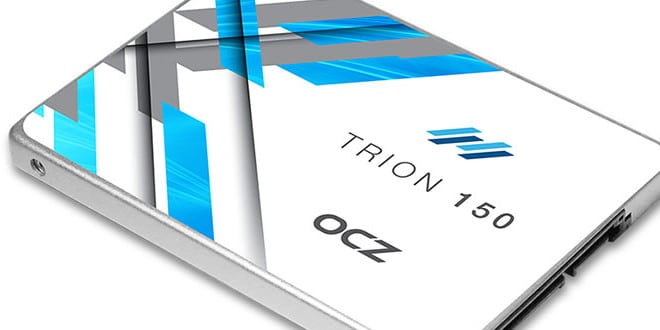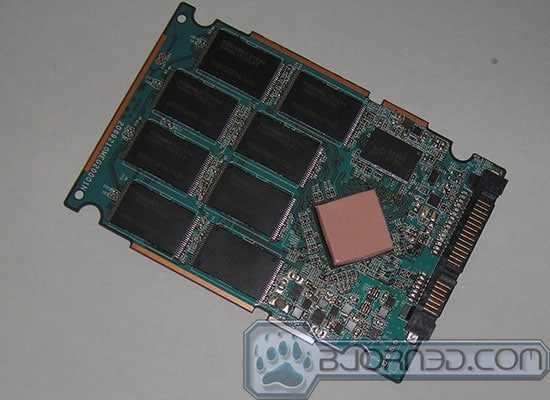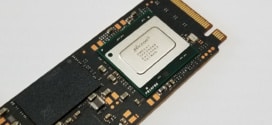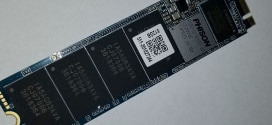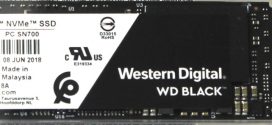OCZ Trion 150
Still thinking that SSDs are too expensive? While the price of the SSDs will probably never reach to the level of the mechanical drive, the price has been dropping steadily over the last couple of years. Thanks to the migration to triple-level-cell (TLC NAND) NAND and 3D NAND and the advances in the fabrication process, the price of SSDs has reached to 25 cents per gigabyte. Now a decent sized, 256GB SSD can be purchased for as cheap as $60. Not only are the prices of SSDs quite good, many of today’s budget SSD also offer pretty good performance without much compromise, which removes nearly any reason for anyone not to have one in their system.
The budget SSD market is a very competitive one, as every manufacturer has one drive that wants to get you hard-earned money. The profit margin of these budget drives are quite small because every company is competing against each other with aggressive pricing. We can see that the price difference between top-of-the-line models like the Samsung 850 EVO and the cheaper models like the Crucial BX200 is about $25. Every drive from other manufacturers such as OCZ, PNY, Kingston and others falls somewhere in between. In fact, Samsung is a bit of an outlier here, as it is the only company that is able to ask for a premium with their drive, even for the budget models. For the rest of the market, the budget SSD price often differs within the range of $10 to $15. Thus, selecting the right drive can be somewhat tricky, as you have to weigh the performance, price-per-gigabyte, warranty, and such.
OCZ is a very well-known SSD manufacturer, as it is one of the pioneers in the industry with its Vertex drives that helped to make the SandForce controller the “it” controller awhile back. Though the company has gone through a bit of a rough time over the last few years, the company is now fully owned by Toshiba after the acquisition in 2014. Despite the acquisition, OCZ continues to function as an independent company where the brand lives on and continues to release its own products. What we have seen so far is that Toshiba now has a greater presence with the internal components of the OCZ drive, as over the last couple of products released from OCZ, are all built with the in-house grown parts.
Like its predecessor, the Trion 100, the Trion 150 continues to use all in-house parts manufactured by Toshiba. In fact, the Trion 150 is not that much different than the Trion 100, as the drive uses the same Toshiba TC58 controller. Despite the same controller, the firmware on the drive still needed to be fine-tuned to utilize the new NAND. What has changed with the Trion 150 is the upgrade to 15nm TLC NAND as opposed to the A19 TLC NAND that was used with the older drive.
The SATA SSD market has matured, and as a result we are seeing that manufacturers are now offering iterative upgrades to their drives, which often consist of just die-shrink of the NAND without a major architecture redesign of controller and NAND. We are okay with iterative upgrades, as even the budget SSDs are capable of delivering good results since SATA SSD performance is generally limited by the 6 Gbps SATA III interface. The only minor downside with the larger capacity die-shrink NAND would probably be lack of parallelism which could have an impact on the drive’s performance. However, with die reduction, manufacturers often are able to deliver more energy-efficient and larger capacity models which could offset the performance difference. Additionally, having a drive with tried and true technology means that the drive reliability can be guaranteed, which is one of the most crucial factors to consider beside the performance for any storage device.
The Trion 150 is available with storage capacities of 120GB, 240GB, 480GB, and 960GB. It is interesting to see OCZ continuing to offer a 120GB model since many SSD manufacturers have opted out of offering the 120GB as the base model because the lower capacity drives often suffered in performance due to lack of parallelism. Still, having a 120GB drive gives an option to those who just need a cheap enough SSD to upgrade an aging system to enjoy the performance benefit. Nonetheless, we still recommend anyone who is shopping for a new SSD to go with at least 240GB as the bare minimum. If you can spare a few more bucks, we think 480GB should be the sweet spot nowadays.
Since the Trion 150 and Trion 100 are quite similar except the NAND, we should expect the Trion 150 to perform very similar to its older sibling. In fact, the Trion 150 has the same rating as the Trion 100 with the maximum sequential read of 550MB/s, maximum sequential write of 530MB/s, maximum random read of 90K IOPS, and maximum random write of 64,0000 IOPS, and steady state random write of 3,6000 IOPS. As always, the maximum random read and write can only be achieved with the larger drive, in this case, the 960GB.
The review unit we are looking at today is the 480GB model. The performance is not that far from the top rated speed where the sequential read and write is rated at 550 MB/s and 530MB/s respectively. The random read is rated at 90,000 IOPS, same as the 960GB drive. However, the random write is rated at 54,000 IOPS and the stead-state write is rated at 3,2000 IOPS, slightly lower than the 960GB model.
OCZ’s endurance rating for the Trion 150 depends on the storage capacity, as the lower capacity has lower writes compared to the larger models. The 120GB drive has a rating of 27GB/day of daily usage and as we move up to the larger capacity drive, the daily usage doubles for each storage increments. For our 480GB drive, this works out to be 110GB/day of daily usage guidelines and 120TB of total bytes written. This should be plenty of writes for the lifespan of the drive.
The Trion 150 is shipped in a soft cardboard box. Inside, we can see the drive is secured with two pieces of plastic clam-shell molding. Inside we can see that the drive has a rather sturdy aluminum casing that not only protects the PCB but also acts as a heatsink. A nice looking paint job is found on the front of the drive. We often do not see that on an internal storage device where it is often hidden from plain view. The drive is a standard 2.5” form factor, weighs 48 grams and is 7 mm thick, so it has no trouble with ultra-portable laptops as well as desktops. It connects to the system via SATA 6 Gbps and is backward compatible with SATA 3 Gbps.
Opening up the Trion 150 is super easy as the two-piece cover is simply held together with clips instead screws. Once the outer casing is removed, we can see the drive uses Toshiba TH58TEG8THLTA20 NAND. For our 480GB drive, there are eight NAND package on one side of the PCB and eight more on the other side. A thick thermal paste is placed on top of the controller to assist with cooling.
The NAND configuration is a bit surprising to us since the Trion 100 utilizes four NAND packages for the 480GB drive, whereas the Trion 150 quadruples that amount. This means that each NAND package inside the Trion 150 contains two die since the largest A15 chip is 16GB (same as the A19 TLC NAND on the Trion 100). Thus, for the Trion 150, this works out to be a 32-die configuration, plenty enough to saturate the controller’s I/O channel. Clearly this is how OCZ is able to optimize the performance of the Trion 150. Despite the fact that both the Trion 150 and the Trion 100 have 32 dies, their configurations are different. The Trion 150 is configured with 16 package with two die per package whereas the Trion 100 is in the configuration of four packages with eight die per package. So, the Trion 150’s performance gain is coming from maximizing all the available channels in order to maximize the drive’s parallelism.
In terms of power consumption, the drive supports DEVSLP to help lower the power consumption even further when the system is under deep sleep. It has a rated idle power of 830 mW and DEVSLP of 6mW and active power of 4.8W. Unfortunately, like the Trion 100, the drive still lacks hardware encryption that is found on many drives on the market today. While typical desktop users may not care much about encryption, the fact that the drive lacks such a feature could potentially limit the Trion 150’s sales.
The drive also comes with the SSD Guru utility that provides the drive’s information such as serial number and health status. With the SSD Guru, users are able to update the firmware of the drive without the need of any third-party tools or booting into the DOS command. The SSD Guru also provides a tuner to help optimize system performance and securely erase the drive. The latest version 1.5.2312 supports Windows 7, 8, 8.1, and 10 as well as Linux. Mac users, unfortunately, have no apps that can be used within the OS. Instead, OCZ provides a tool to create a bootable USB drive (there is also a version for Windows users).
The Trion 150 is backed with a 3-year warranty; pretty standard for a budget drive. However, the Trion 150 joins other SSDs that OCZ has launched over the last few years with the ShieldPlus Warranty program. the ShieldPlus Program warrants the drive based on the serial number of the unit without the need of a receipt. In the event that the drive is deemed defective, OCZ will ship a new advanced replacement drive to a customer within 24 hours and provides a pre-paid return label. This is a very valuable add-on to the drive, as it helps to minimize the system downtime and all of the hassles associated with the warranty replacement.
 Bjorn3D.com Bjorn3d.com – Satisfying Your Daily Tech Cravings Since 1996
Bjorn3D.com Bjorn3d.com – Satisfying Your Daily Tech Cravings Since 1996
